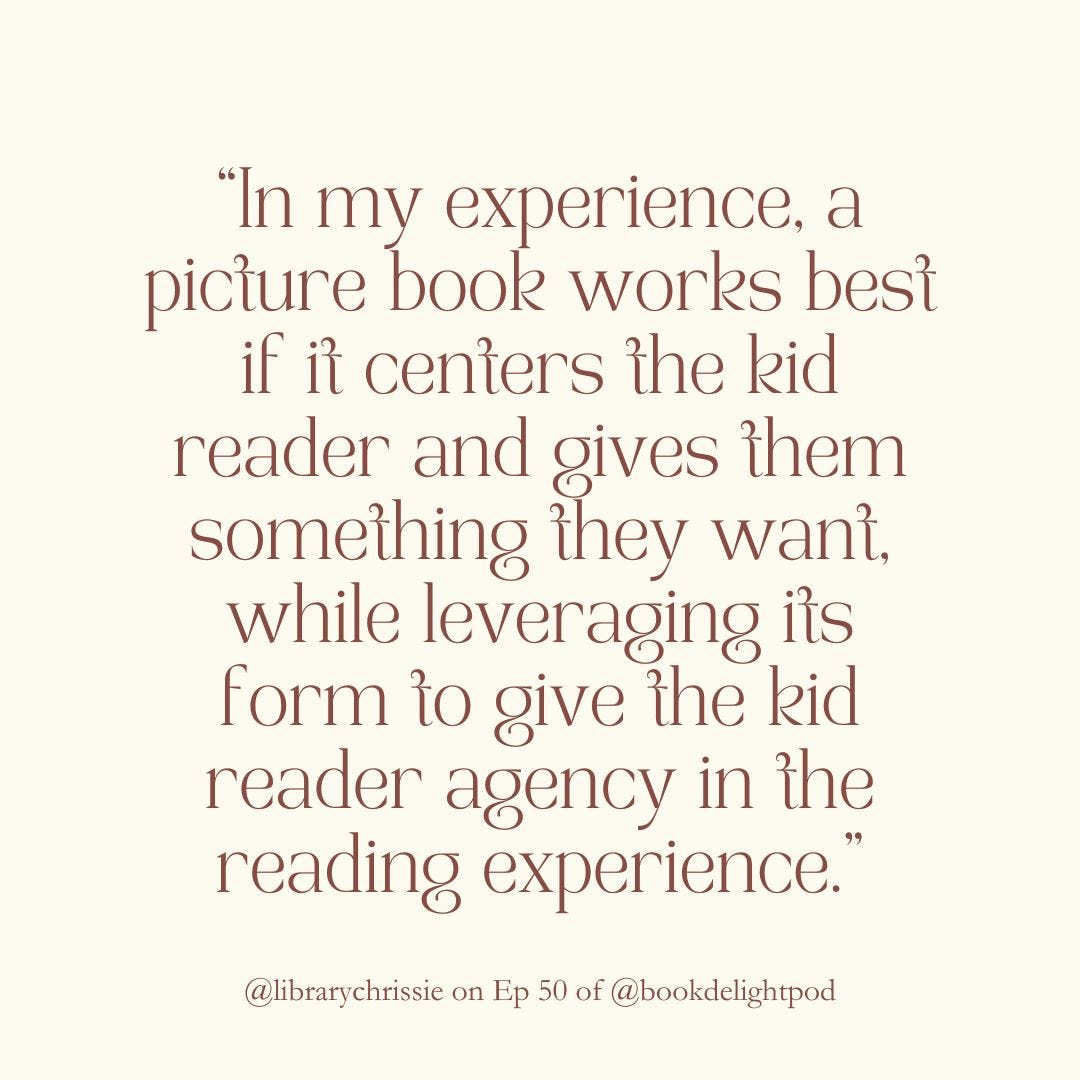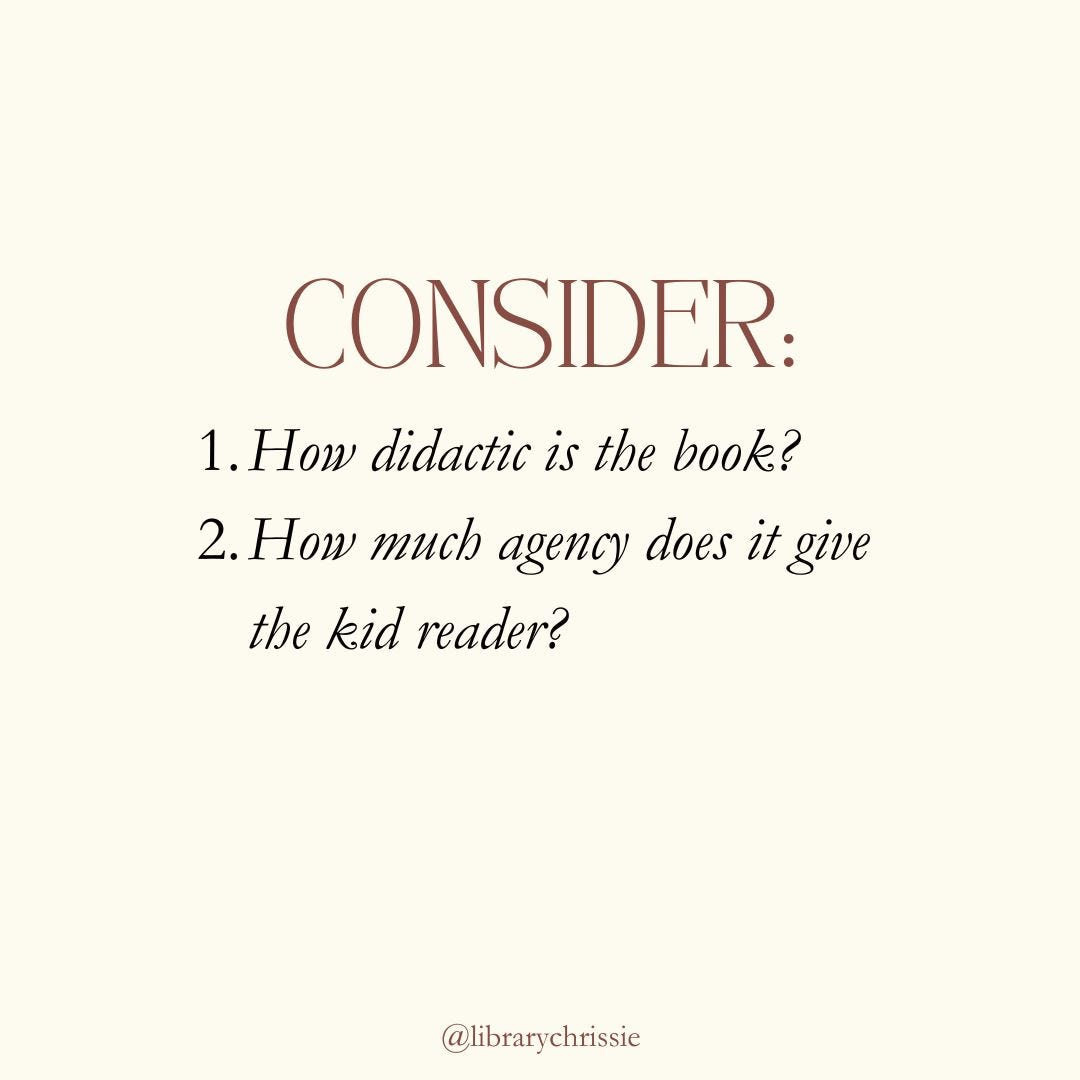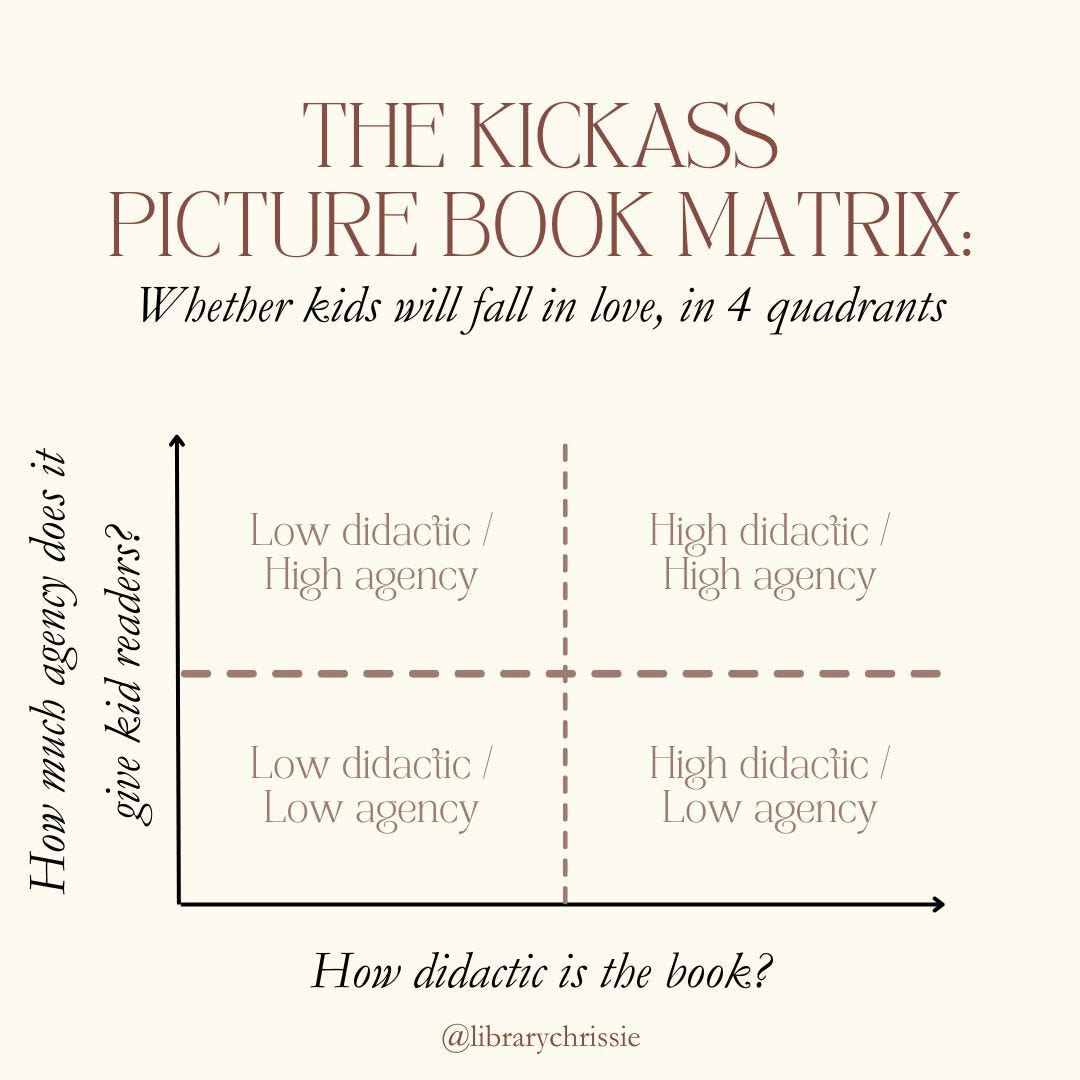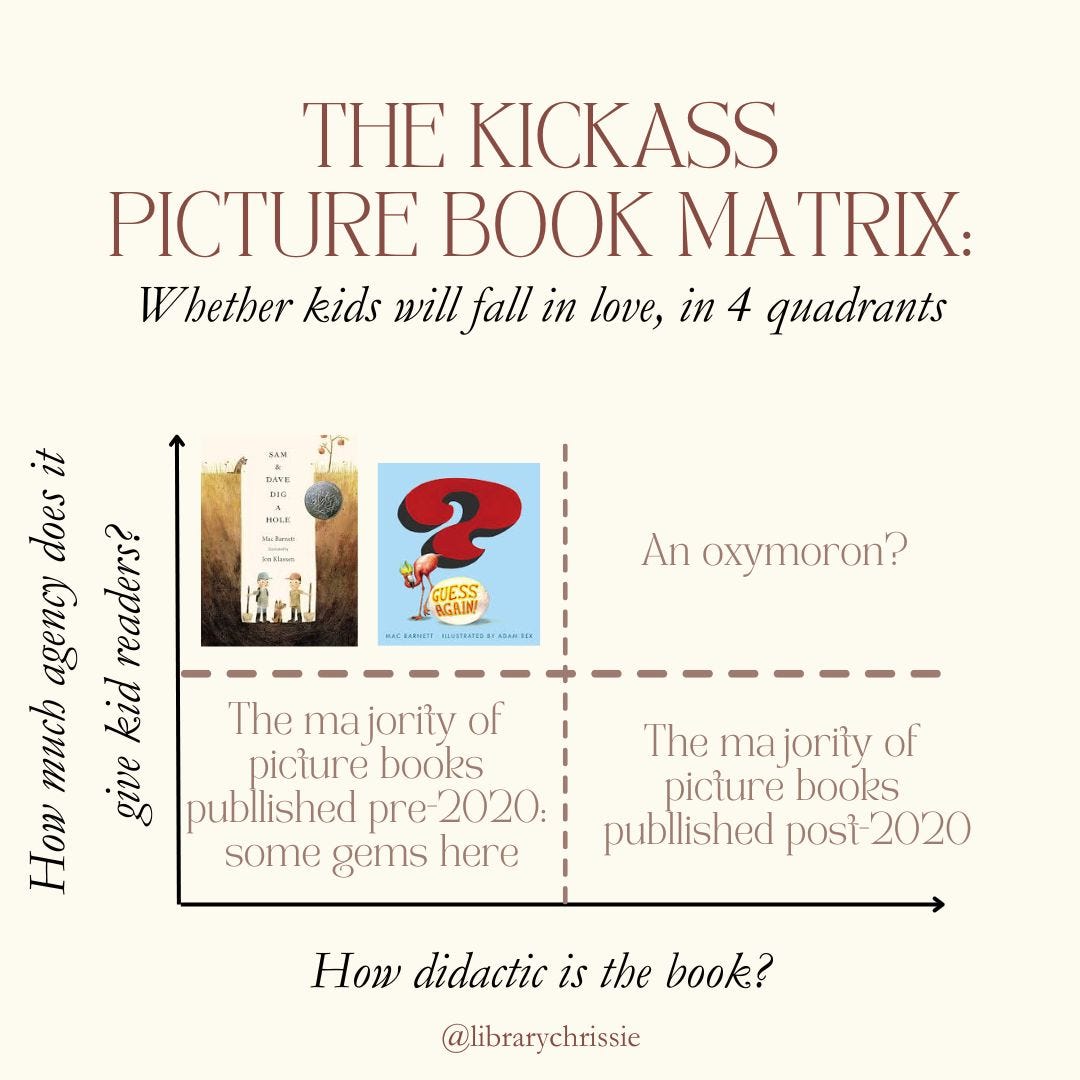This week on the Book Delight podcast, I reflected on the question, what makes a picture book “work?” Here’s my working theory:
I wanted to dig deeper, though. For me, based on my experience reading out loud to kids over 1,000 times per year, I’ve made two big observations:
Kids prefer to avoid being taught a lesson in their stories. While they may be perfectly polite during these read-alouds (or maybe not), these are not the books that rile the crowd or get requested for checkout week after week.
Kids love stories that involve them in the storytelling; they feel a sense of agency.
These observations led me to two evaluative questions we can use when considering whether a picture book is most likely to be a big hit as a read-aloud:
But the crowd was chanting “more!” (okay, it was just me), so I went full-on book nerd and made a matrix, as one does:
This matrix is not a one-stop shop, but I’ve found it to be a helpful reflective tool. In my experience, the read-alouds that end up being the most memorable fall under low didactic / high agency. My personal least favorite quadrant is high didactic / low agency. I further hypothesize that the majority of picture books published before 2020 fell under low didactic / low agency, and since 2020, there has been a huge swerve towards books that are high didactic / low agency (sorry, kids!).
Next came the fun of brainstorming books that might fall into each quadrant. And guess what? I sincerely love books that fall into each quadrant, but the trends in which quadrants house the most books that kids love are telling and instructive for any grown-up who deals in kidlit.
Let’s dive into some examples, both positive and negative.






